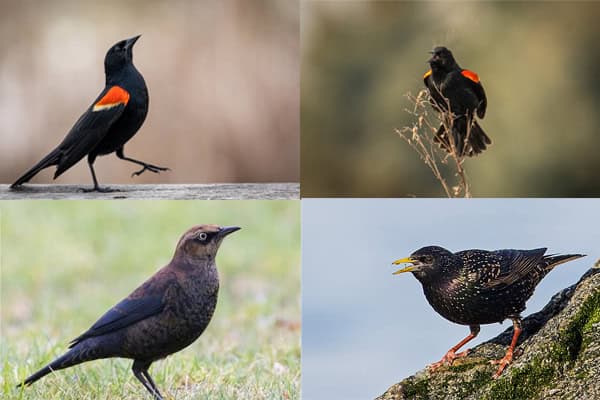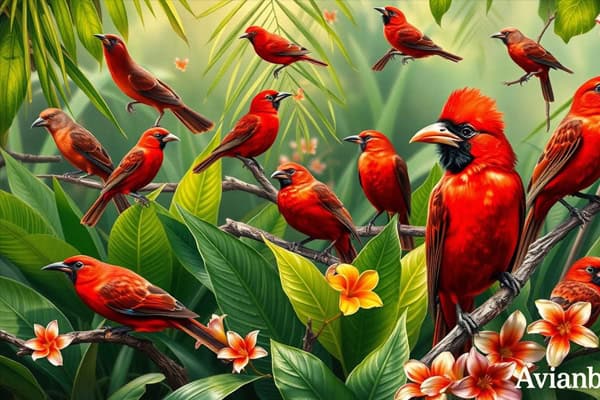16 Types of Black Birds in Michigan (With Pictures)
Did you know nearly 90 different bird species visit Michigan during migration, many being black birds? This fact shows how diverse Michigan’s bird life is. We’ll look at 16 types of black birds in Michigan, with detailed info and beautiful pictures for birdwatching fans.
If you love birds or are just starting, knowing about blackbirds is key for spotting them. Our guide covers everything from the common Red-winged Blackbird to the rare Rusty Blackbird. It’s perfect for anyone wanting to learn more about Michigan’s bird species. Let’s explore blackbird identification together and appreciate these amazing birds.
Common Black Birds Found in Michigan
- Red-winged Blackbird
- Common Grackle
- European Starling
- Rusty Blackbird
- Yellow-headed Blackbird
- Brown-headed Cowbird
- Baltimore Oriole
- Brewer’s Blackbird
In this section, we explore some of the most common blackbirds in Michigan. These birds are not just beautiful but also play important roles in our ecosystems. We will look at the Red-winged Blackbird, the Common Grackle, and the European Starling. We’ll focus on their unique traits and behaviors.
1. Red-winged Blackbird
The Red-winged Blackbird is a standout in Michigan. It’s known for its bright red shoulder patches. These birds live in wetlands and marshes. In the breeding season, males show off their colors to attract females.
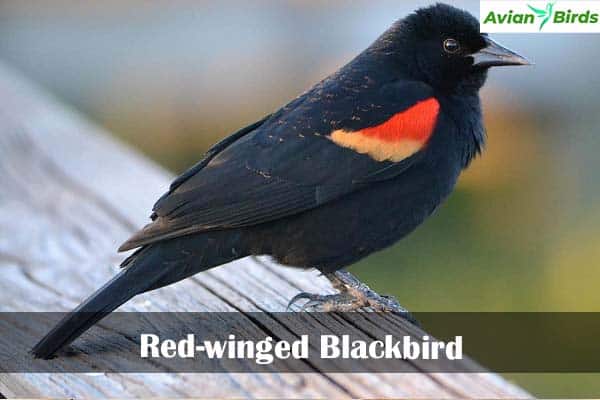
Identifying Red-winged Blackbirds is easy because of their looks and sounds. They eat seeds and insects, helping the local food web.
2. Common Grackle
The Common Grackle has shiny feathers that look bronze or purplish in the sun. These birds often move in big groups, showing their social nature. They have a long tail and a unique call that adds to Michigan’s sounds.
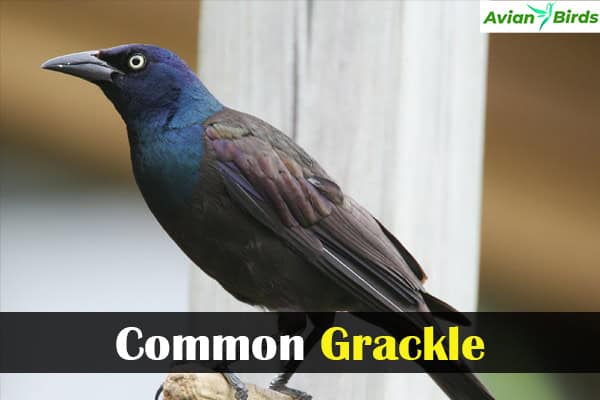
Common Grackles live in open fields and cities, looking for food like seeds and small animals.
3. European Starling
The European Starling is known for its ability to mimic other sounds. It’s adaptable and can live in many places in Michigan. In the fall, these birds form huge flocks, creating beautiful sights in the sky.
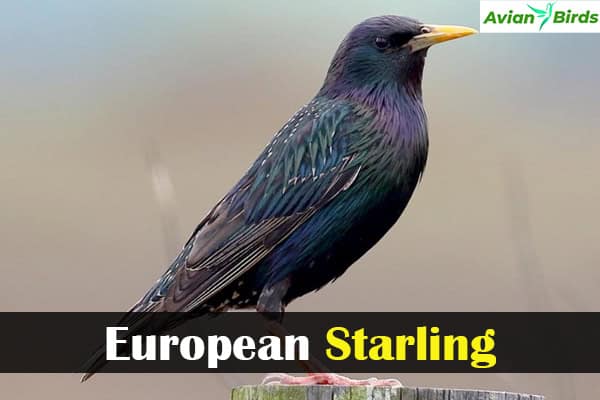
They eat insects and fruits, playing a big part in Michigan’s ecosystem. They affect local agriculture and wildlife.
| Species | Habitat | Feeding Preferences | Breeding Behavior |
|---|---|---|---|
| Red-winged Blackbird | Wetlands, Marshes | Seeds, Insects | Nest-building in reeds |
| Common Grackle | Open fields, Urban Areas | Seeds, Small Animals | Social nesting in colonies |
| European Starling | Urban Areas, Farmlands | Insects, Fruits | Forms large roosts |
Characteristics of Black Birds in Michigan
Blackbirds in Michigan show a wide range of characteristics. Their size and color vary, making each type unique. Males often have bright, shiny feathers, while females have duller colors. This helps them hide during nesting.
Size and Color Variation
Blackbirds come in different sizes, like the Red-winged Blackbird and Common Grackle. The Common Grackle is bigger, making it easy to spot. They have various colors, including black, brown, red, and yellow on their wings.
Distinctive Sounds and Calls
Blackbirds make sounds that help us understand them better. Each type has its own call, important for talking to each other. Males use these sounds to mark their territory and find mates. Also, Their calls can be heard far away.
| Species | Size (inches) | Color | Call Characteristics |
|---|---|---|---|
| Red-winged Blackbird | 7.5 – 9 | Black with red and yellow shoulder patches | Trilling and chattering sounds |
| Common Grackle | 11.5 – 13 | Iridescent black to purples and greens | Harsh, raspy calls |
| European Starling | 7.9 – 9.1 | Black with speckled white spots | Whistling and clicking sounds |
Habitat and Behavior of Black Birds
Learning about blackbird habitats and behaviors shows us how they live in different places. Each species has its own way of nesting and breeding, based on where it lives. Let’s look at where blackbirds like to live and how they make their homes.
Preferred Environments
Blackbirds can live in many places, showing how well they adapt. Their favorite places to nest include:
- Marshes and wetlands, which offer lots of food.
- Grasslands, are perfect for ground-nesting birds.
- Urban areas, where they find many places to nest in parks and gardens.
Nesting Patterns and Breeding Seasons
Blackbirds have different ways of nesting. For example, the Red-winged Blackbird builds nests in tall reeds. Others choose bushes or trees to stay safe from predators. Some blackbirds, like the Brown-headed Cowbird, lay their eggs in other birds’ nests.
The breeding season usually happens in warmer months, thanks to changes in the environment. These cycles are important for their survival and success in making more birds. Knowing about these habits helps us see how important blackbirds are in Michigan’s varied landscapes.
Rare and Migratory Black Birds in Michigan
In Michigan, we’re lucky to see many rare blackbirds. These birds are key to our ecosystem. The Rusty Blackbird and the Yellow-headed Blackbird are two species that bird lovers look forward to seeing each year.
4. Rusty Blackbird
The Rusty Blackbird is near-threatened, making it a rare find. It has a unique rusty look, especially in males. They live in wetlands and bogs. Seeing these birds during their migration is a big deal for bird watchers.

5. Yellow-headed Blackbird
The Yellow-headed Blackbird stands out with its bright yellow and black feathers. They live in wetlands during the breeding season, from late spring to summer. Bird watchers love to see them during migration.
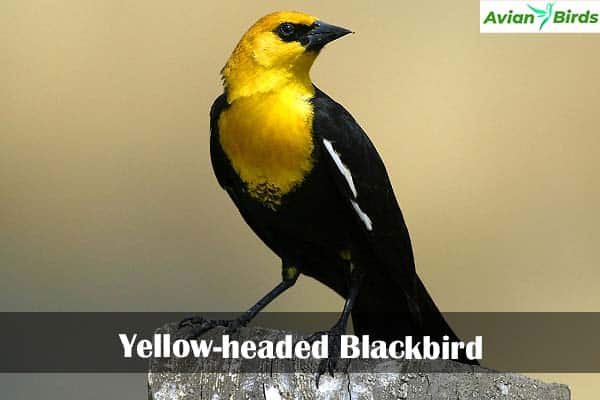
| Species | Status | Habitat | Migration Season |
|---|---|---|---|
| Rusty Blackbird | Near-threatened | Wetlands & Bogs | Fall & Spring |
| Yellow-headed Blackbird | Common (During Migration) | Wetlands | Spring & Summer |
We’re learning more about Michigan’s rare blackbirds. Protecting their homes helps these amazing birds. It also keeps our local nature rich and balanced.
Related Video:
Attracting Black Birds to Your Backyard
Creating a welcoming space for blackbirds can make our backyards more lively. We can draw these stunning birds in by offering the right food and nesting spots. This brings more beauty and life to our surroundings.
Best Bird Feeders for Black Birds
Choosing the right bird feeders is key to attracting blackbirds. We suggest using different types of feeders to match their varied eating habits. Some top choices are:
- Platform feeders: Great for large groups of blackbirds to feed together.
- Tube feeders: Ideal for smaller birds and help reduce waste by mixing seeds.
- Suet feeders: Blackbirds love high-energy suet, especially when it’s cold.
Feeding them sunflower seeds, millet, and suet will draw blackbirds and feed them well through the seasons.
Creating Nesting Habitats
To draw blackbirds, we should focus on making good nesting spots in our yards. Adding native plants can change everything. Here are some tips:
- Plant dense shrubs and trees: These give blackbirds shelter and places to nest.
- Offer nesting materials: Leave twigs, grass clippings, and leaves out for them to use.
- Provide water sources: Small ponds or birdbaths can bring blackbirds and help them.
Using these methods, we can increase our chances of seeing blackbirds. We also help them thrive in our yards.
Other Notable Black Bird Species in Michigan
Michigan is a haven for many blackbird species, each adding to the state’s rich bird life. The Brown-headed Cowbird, Baltimore Oriole, and Brewer’s Blackbird stand out with their unique traits. They bring fascination to birdwatchers and nature lovers.
6. Brown-headed Cowbird
The Brown-headed Cowbird is known for its unique way of raising its young. It lays its eggs in other birds’ nests. This behavior shows how well it has adapted to its environment. In Michigan, you can find these birds in open fields and near forest edges.
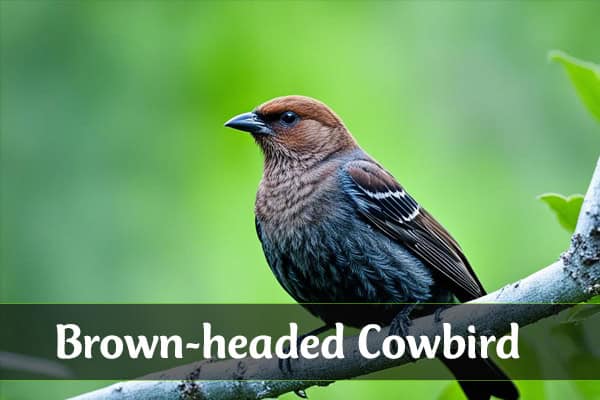
7. Baltimore Oriole
The Baltimore Oriole is known for its bright orange and black feathers. Its beautiful song makes it a favorite among bird lovers. These birds build hanging nests in deciduous trees. During the warmer months, they brighten up Michigan’s landscape.
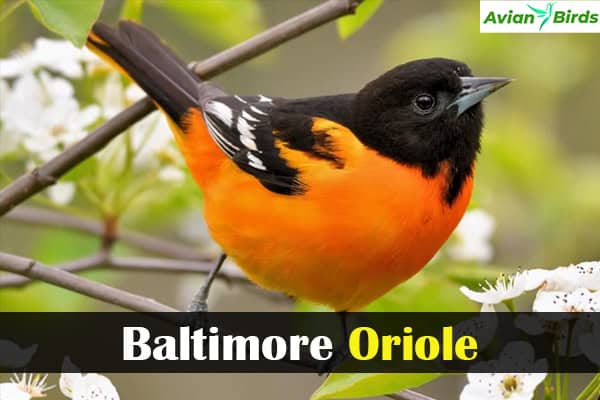
8. Brewer’s Blackbird
Brewer’s Blackbird is a striking bird with shiny black feathers and a short tail. It has a bright yellow eye. You can see them in open areas and grasslands, often with other birds. Their songs add to the lively atmosphere, making them popular with backyard birdwatchers.
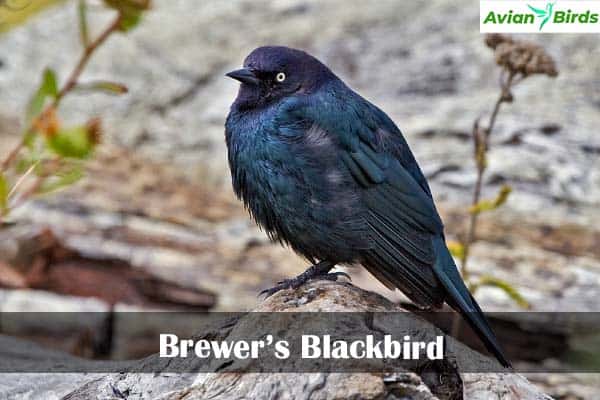
| Species | Behavior | Habitat | Characteristics |
|---|---|---|---|
| Brown-headed Cowbird | Brood parasitism | Open fields, edges of forests | Brown head, sleek body |
| Baltimore Oriole | Melodic singing, nest building | Deciduous trees, gardens | Vibrant orange and black plumage |
| Brewer’s Blackbird | Social foraging | Open areas, grasslands | Shiny black color, yellow eye |
Black Birds in Michigan and Their Ecological Importance
Blackbirds play a big role in our local ecosystems. They help control insect populations, keeping pests away. They also help spread seeds, which helps plants grow. This makes our natural areas more diverse and connected.
Role in Local Ecosystems
Blackbirds are key to keeping ecosystems balanced. They eat harmful insects, reducing the need for pesticides in farming. By spreading seeds, they help plants grow, making ecosystems healthier for many animals.
Having blackbirds around means our environment is doing well. It shows how different species work together to keep their homes healthy.
Tips for Spotting in the Wild
Here are ways to increase your chances of seeing blackbirds:
- When they’re most active, visit wetlands or marshes early in the morning or late in the afternoon.
- Listen for unique calls. These can help you find specific species, like the Red-winged Blackbird.
- Use binoculars to look for different blackbird types in the plants and near water.
- Join local birdwatching groups or events. They offer insights and experiences from experts.
What to Look for in Flight
Understanding how blackbirds fly helps identify them. Their flight patterns can tell us about their type.
- Look at their wing shapes and how they flap. For example, Red-winged Blackbirds fly with steep rises and drops.
- See how fast they fly. Some species dart quickly, while others glide smoothly.
- Notice their tail shapes. Some blackbirds have long, pointed tails that set them apart from others.
Check Our Previous Articles:
| Owls in Indiana |
| Learn About the White-Naped Crane |
| Mandarin Duck: Everything You Need To Know |
| Discover the Graceful Demoiselle Crane |
| Black-Headed Duck: Unique Waterfowl of South America |
Conclusion
Reflecting on Michigan’s blackbirds shows their key roles in our ecosystems. We’ve seen how different species, their actions, and where they live are crucial. They help keep our environments healthy and play a big part in the food web.
Blackbirds stand out with their looks, sounds, and ways of living. Whether it’s the bright Red-winged Blackbird or the sleek Common Grackle, each adds to our natural world. We urge everyone to keep exploring Michigan’s birdwatching scene. There’s always more to see and learn.

